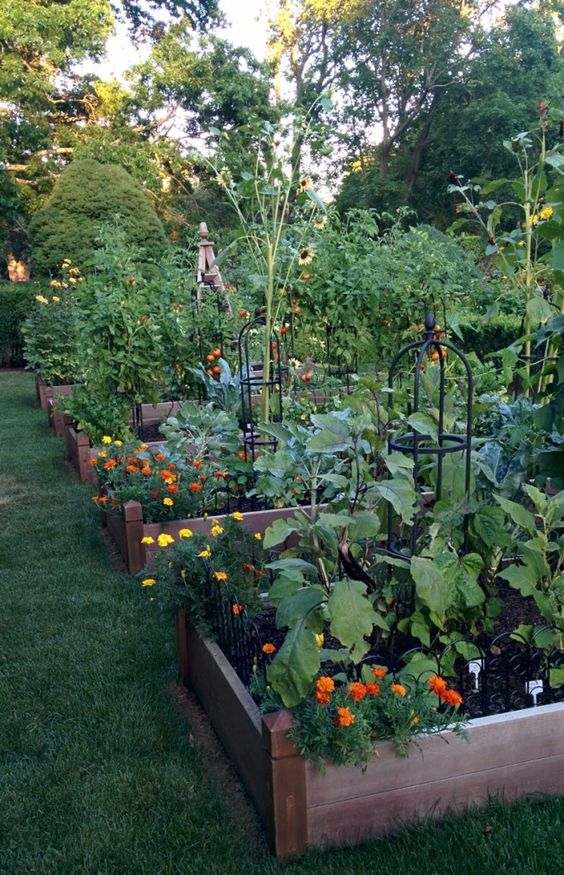Everyone should grow a garden
An example of a larger vegetable garden with raised garden beds
There are few things in life that everyone can benefit from, but one certainly is a garden.
Everyone should have a garden or at least have access to one. These can come in many shapes, sizes, and variations, and although it may seem like someone is unable to have a garden because of their living situation, I can assure you that it is possible.
A person or family just getting into gardening probably shouldn’t start with a traditional vegetable garden. Such large gardens come with a large workload, and beginning with one could feel like you’re in over your head. A small garden or even an herb garden is a good place to start. These will teach the basic skills of gardening while still offering the benefits of home-grown produce.
Even after graduating to a larger garden, these small gardens can be useful, growing additional plants such as herbs or smaller produce that do not need the space of a large garden.
These small gardens can also be used in apartments and condos: homes in which it may seem impossible to grow plants. In an apartment, a window box can be used to grow herbs and small veggies. Some apartments do have shared outdoor spaces, and some of this area can also be used for a larger community garden.
One of the best plants for these small gardens is basil, which is a low-maintenance, ubiquitous plant that will come in handy while cooking and can be used to spice up many dishes. Mint, rosemary, thyme, parsley, oregano, and even lavender are great plants to start with.
After this small garden, a switch can be made to a larger garden. More space, sunlight, water, and time are needed to allow a larger garden to thrive, but the benefits that they offer are completely worth the work.
A good option for larger gardens is raised garden beds. One or two rectangular garden beds with rows of plants are a simple way to grow vegetables. This also keeps out some pests that may want to eat the plants before you.
Such beds are easy to construct, built from four large planks of wood nailed together. No bottom is necessary as the soil in the beds can simply rest on top of the soil of the ground.
These beds also make fertilization simple and easy. To fertilize the soil before planting, simply cover the soil with a layer of compost and allow it to decompose slightly before planting. This creates nutrient-rich soil in which most plants will thrive.
Some of the best vegetables for larger gardens include tomatoes, cucumbers, beans, carrots, onions, many varieties of peppers, lettuce, broccoli, cauliflower, and many more.
Any garden, whether large or small, offers an incredible variety of benefits. Growing vegetables rather than buying them from the store saves money while also decreasing the environmental impact of the commercial farming that is used to grow most store-bought produce.
Growing plants teaches patience, hard work, perseverance, and commitment. To grow a garden, consistent, tender care is needed. Having this consistency can also benefit your mental health. Having something to care for provides a sense of purpose that might otherwise be lacking.
Even the taste of home-grown food is far superior to that of store-bought veggies. The feeling of biting into the first tomato of the season, tasting the sunlight, soil, and hard work, and knowing that it was you who created this food, is unlike any other.

Millie Alt is a junior excited to be starting her first year on The Central Trend. She loves, loves, loves to write and is so excited to have an opportunity...

























































































